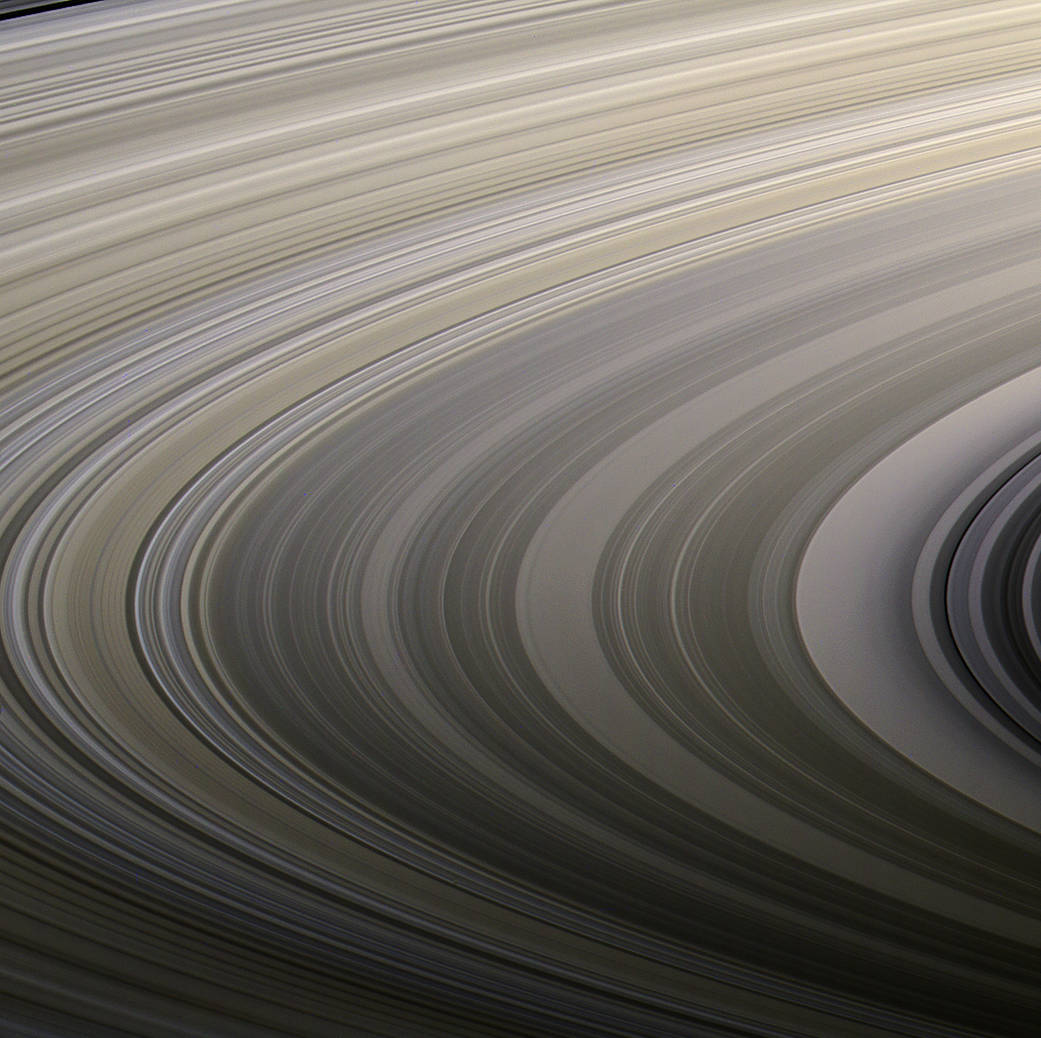Saturn's Multicolored Rings Dazzle in Photo by Cassini Spacecraft

Saturn's iconic rings seem to go on forever, with infinite but subtle color variations, in a spectacular photo by NASA's Cassini spacecraft.
Cassini took the photo on Aug. 22, 2009, when the probe was about 1.27 million miles (2.05 million kilometers) from the center of the rings, NASA officials said.
"The particles that make up the rings range in size from smaller than a grain of sand to as large as mountains, and are mostly made of water ice," NASA officials wrote in a photo description Monday (April 23). "The exact nature of the material responsible for bestowing color on the rings remains a matter of intense debate among scientists." [Saturn's Glorious Rings in Photos]
The newly released photo is yet another reminder of the scientific legacy left by Cassini, which ended 13 years of work at Saturn with an intentional death dive into the gas giant's atmosphere on Sept. 15, 2017. Cassini was running out of fuel, and mission managers programmed the spacecraft to execute that suicide maneuver to make sure that the probe never contaminated the Saturn moons Titan and Enceladus — both of which may be capable of supporting life as we know it — with microbes from Earth.
The $3.2 billion Cassini-Huygens mission was jointly run by NASA, the European Space Agency and the Italian Space Agency. Huygens was a piggyback European lander that touched down on Titan in January 2005, pulling off the first-ever soft landing on a body in the outer solar system.
The Cassini orbiter has many accomplishments to its name as well, of course. For example, Cassini's observations revealed Titan to be a strangely Earth-like world, with rivers, lakes, seas and a weather system — though the liquids flowing and sloshing on the big moon's surface, and falling from its skies, are hydrocarbons, not water.
Cassini also spotted geysers of water ice blasting from Enceladus' south polar region in 2005. Mission team members later concluded that this material is coming from a potentially habitable subsurface ocean of liquid water.
Get the Space.com Newsletter
Breaking space news, the latest updates on rocket launches, skywatching events and more!
Follow Mike Wall on Twitter @michaeldwall and Google+. Follow us @Spacedotcom, Facebook or Google+. Originally published on Space.com.
Join our Space Forums to keep talking space on the latest missions, night sky and more! And if you have a news tip, correction or comment, let us know at: community@space.com.

Michael Wall is a Senior Space Writer with Space.com and joined the team in 2010. He primarily covers exoplanets, spaceflight and military space, but has been known to dabble in the space art beat. His book about the search for alien life, "Out There," was published on Nov. 13, 2018. Before becoming a science writer, Michael worked as a herpetologist and wildlife biologist. He has a Ph.D. in evolutionary biology from the University of Sydney, Australia, a bachelor's degree from the University of Arizona, and a graduate certificate in science writing from the University of California, Santa Cruz. To find out what his latest project is, you can follow Michael on Twitter.









